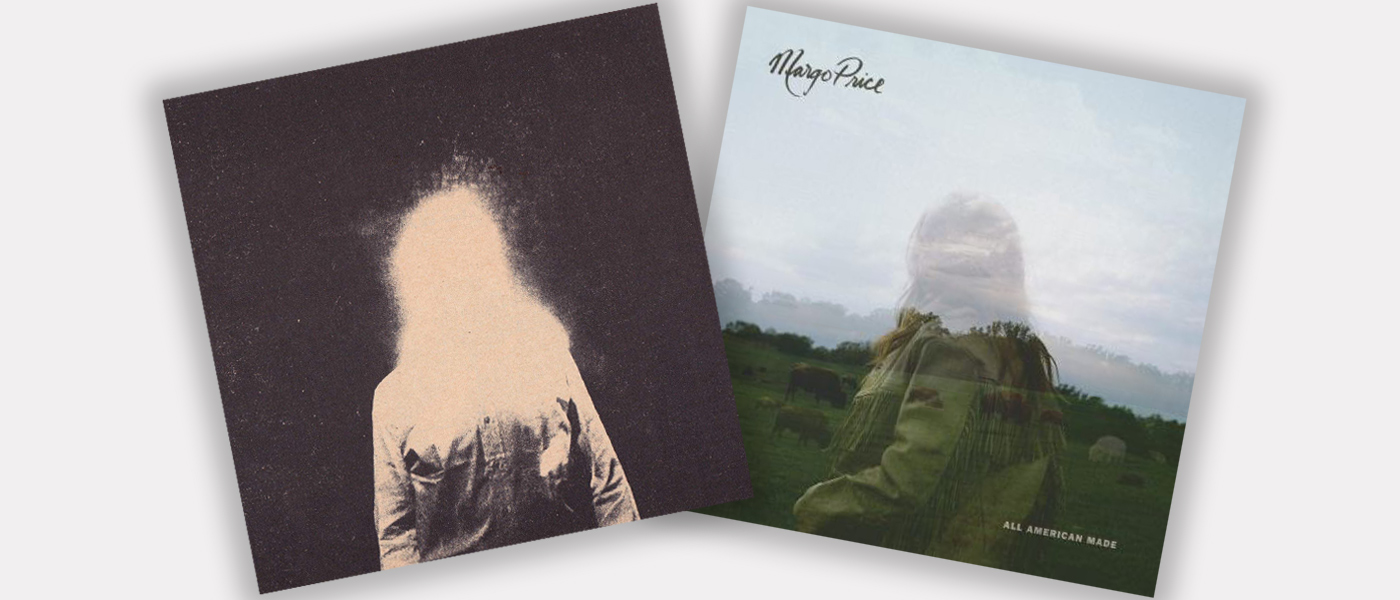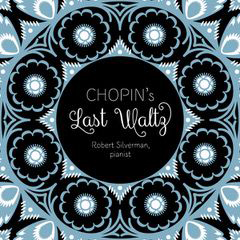
I recently picked up Chopin’s Last Waltz, featuring Robert Silverman on piano, in my never-ending quest to find the right music to help quiet my mind. It seems like all the audiophiles are agog about it, so I figured I’d check in on it too. It’s mostly pretty calming until it isn’t. And it’s a rewarding listen all around. I will not be the lone dissenter in this instance.
Secrets Sponsor
I’m not qualified to shine any new light on the work of Chopin. I am by no means an authority, and the information is out there already. According to Silverman’s liners, there has long been a faction of scholars who believe that Chopin was an inferior composer, at least in comparison to the acknowledged heavyweights. Folks seem to believe that he was an able writer of catchy melodies, but that he was a bit pedestrian beyond that. To that, I say “whatever.” I’m of the opinion that we often complain about things to show how refined our taste is. I find the entire program to be delightful. I am especially enthralled with the quieter material on offer, which seems to be the direction I’m heading in my 44 th year. The tunes get outright boisterous and emotionally intense at times, and the softer stuff is front-loaded so that the program sort of ramps up as it goes along. That’s almost certainly by design. For all I know, the songs are laid out according to a plan that spans the genre, not just this work. There are nocturnes (evocative of the night – probably closest to what I initially sought for relaxation), preludes (shorter pieces, often as an introductions to longer works), mazurkas (based on traditional Polish dances), ballades (balletic narratives), and – obviously – waltzes. Silverman paints them all with a sympathetic brush, and it’s clear as to why he’s won so many awards and accolades, especially in his native Canada. The guy’s got chops. He’s pretty great.
As is the production and presentation on this disc. The recording was made without compression or equalization in some fancy digital realm, and Kevin Gray mastered the album from those DSD256 files. This means the sampling rate was 256 times that of a standard CD. Sounds pretty close to analog to my ears. The soundstage is deeper than it is wide; the action stays confined between your speakers. Quality Record Pressings did a mostly fine job on this one, although there’s a bit of noise at the start of side two on my copy. If you’re a lover of Chopin or Classical piano music in general, I’d recommend this record for your collection. It’s a tight little package with grandiose sonics and masterful performances. It’s grand.
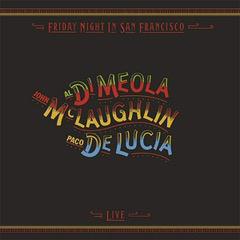
Impex reissued a legendary performance by Al Di Meola, John McLaughlin, and Paco DeLucia recently. It was recorded at the Warfield and called Friday Night in San Francisco. I’ve spent a few Friday nights at the venue and thought that an album of classical guitar wizardry might be soothing. So I jumped. I’m glad I did, but I am not soothed. That’s not the design. This is something else entirely…
These guys play fast. That’s the first thing you’ll notice. I mean, they blaze. Throughout the program, DeLucia is in the left channel, Di Meola the right, and McLaughlin in the center of things. So, you can always tell who’s doing what, if you’re into that sort of thing. The performances are great. There’s humor (they drop the Pink Panther theme into one of the tunes), and lots of fiery emotion. I haven’t looked online to see if there are video components to this performance that are available for our perusal, but I think it would be interesting to see. The crowd perks up at some seemingly incongruous moments (or maybe the producers just decided to drop some crowd noise into accent the “live” nature of things). I’d like to see if the players were perhaps doing something visual to warrant the applause. Slinging their hair around or playing with their teeth, maybe. The first song on the record reminds me of the Disco classic “I Will Survive” in one moment and the Disco comedy of Santa Esmeralda’s take on “Don’t Let Me Be Misunderstood” in the next. All of it is cranked to 11.
You can hear the nylon strings ringing when the players allow it. There are some call and response moments that remind me of the classic footage of Stevie Ray Vaughn and Jeff Beck cutting each other’s heads on tour together in 1989. The guitar album was recorded from a distance. Almost feels like the mics were set up in the center of the balcony. I might have preferred a little more closeness, a bit more detail. But the listener gets the point easily enough. These cats were deft. They owned their dynamics and wielded them like loving sonic weapons. Peaks and valleys, hills and dales. They cover a Chick Corea tune, but they get so into their dual that I lose the composition’s thread. It begins to sound like so much noodling after a bit until they drop that Pink Panther nod and some Blues stuff into the middle of it all.
I’m happy to have this record in my vault, but I’m not sure that I’ll get as much play from it as I’d imagined I might. It wears me out after a fashion. Impex did their job, and the players certainly came through. I feel like I need a break after a few minutes. Not due to sonic fatigue so much as brain fatigue. I can’t picture how anyone could play this fast for this long. It’s pretty crazy.
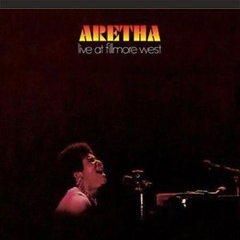
From one live performance in San Francisco to an earlier one: I’d ordered Aretha Franklin’s Live at the Fillmore West before her passing. As one might imagine, the listen took on a new meaning once she’d left us. The single record’s worth of material was cobbled together from the highlights of a three-night run at Bill Graham’s hallowed spot. I never caught her live. This record tells me I made a huge error in this regard.
Secrets Sponsor
Franklin kicks things off with her most famous tune, Otis Redding’s “Respect.” Maybe it’s something about live recordings made in San Francisco, but this version is so fast it’ll give you whiplash. And not unlike the Friday Night in San Francisco disc that we just explored, the recording is a little distant. There’s plenty of air in the room, but it might have been a little funky. These performances took place in front of a bunch of hippies. To that end, Franklin tilts her set towards fare from the likes of Stephen Stills (“Love the One You’re With”), the Beatles (“Eleanor Rigby”), and… Bread (“Make It With You”). Franklin and her band make the tunes their own, but in fact, it’s Aretha and King Curtis’s band making the tunes fly. Curtis employed Jerry Jammott on bass, Billy Preston on organ, and Cornel Dupree on guitar. Jammott is especially monstrous. I caught him playing in Gregg Allman’s band once and never looked at anyone else onstage. There are lots of highlights on Fillmore, but I love it most when Ray Charles comes out on “Spirit in the Dark.” That’s a collaboration involving two Soul singers of the highest order. I’m surprised the venue stood up to the onslaught. It could have just as easily burnt to the foundation.
The liners make note of a “low-frequency electronic buzz during ‘Dr. Feelgood,’” that was part of the performance and could not be edited out in the mix. Which is fine, but it’s not only in “Dr. Feelgood.” I hear it first at the beginning of “Bridge Over Troubled Water.” It’s not a deal breaker and it sort of adds to the live ambiance. I’d prefer it if it weren’t there, but it kinda puts you in the room in a different way than a true audiophile recording would. Live performances aren’t perfect. They are, by definition, “alive.” And sometimes life puts a hum in our amps.
And sometimes life ends sooner than we would expect or hope for it to. Aretha Franklin’s contribution to popular American music can’t be overstated. She was a titan, and this record gives you a good taste of what it must have felt like to stare her down in the early ’70s. Things were flying off the rails, and this performance is appropriately unhinged. Emotionally powerful, and musically rich. This version is an all-analog affair. My advice would be to jump while you can.
Rest in Peace, Queen Aretha.
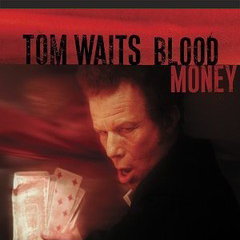
Had some bad luck on Record Store Day a while back when the Tom Waits set that I’d been so hotly anticipating turned out to be a bucket of coal. The RSD discs were a major part of a larger reissue campaign, and I picked up a copy of Blood Money from the same series to see if perhaps ANTI- had just rushed the production of the Orphans set to make a deadline or something. Unfortunately, this was not the case. It’s not as bad as it could be, but things ain’t great. Which is a shame. Waits’s catalog is full of such interesting, organic noises that the whole thing screams for a reputable reissue. I’m softening myself to the idea that this may never occur. Perhaps there are too many labels involved. The Island stuff would sound especially zesty in the hands of MoFi, for instance. But the earlier Asylum songs would benefit from a similar treatment, and the ANTI- stuff has never been done right. To this very day. Dammit.
Blood Money is the soundtrack to a play. It was released in 2002 on the same day as another Waits soundtrack (Alice) was released for a separate stage production. It’s his third album related to a play that I’m aware of, the other being The Black Rider. Anyway, the songs on Blood Money are a blast. Some of them have become pillars in the Tom Waits canon. “God’s Away On Business” might be the most well known, but “Starving in the Belly of the Whale” makes a grand announcement, along with “Coney Island Baby,” and “The Part You Throw Away.” The usual instrumental suspects are in the sonic lineup: lots of marimba, a lazy clarinet, accordion, and various bells and whistles (for real).
On this reissue, all of those lively instruments are just missing a little, well, life. They’re in the room; they’re just not that present. They sort of have their collective head on the desk while the lesson is getting lost in the mix, so to speak. But that’s not the worst part. The worst part is the pressing(s). That was certainly the case for the Orphans set, and it is true to a lesser degree of Blood Money. First side is okay enough; second side is less okay. And it appears that I’m not the only one who has noticed. The series is getting generally panned across the board. It seems like Rhino did a series of the Elektra titles a few years back that was a miss too. Someone should get it right. The work is screaming for it, as are the fans. But every time someone whiffs, I start to lose hope that a reputable company will ever try to stem the tide. Too bad, Tom.
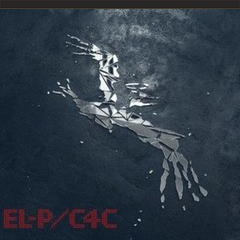
We did a deep dive on an older Killer Mike record (R.A.P. Music) a couple of months back, and I fell in love with it. It was amongst the earliest collaborations between Mike and El-P. The latter’s Cancer 4 Cure was another, and that’s what we’re here to explore now. It was originally released in 2012, and it’s still readily available today. I think it is absolutely worth circling back for, but I also don’t abide by the Hip-Hop timeline. According to standard Hip-Hop procedure, anything older than three months is ancient. But this sounds fresher to me than most anything I’ve heard in 2018. I’m all in.
As a general rule, Killer Mike is the driving voice behind Run the Jewels while El-P drives the rhythms and beats. That’s almost certainly an oversimplification because I’m sure Mike can find his way around the knobs, and El-P can rap for real. That’s on full display on Cancer 4 Cure. Until it’s not. Some of the songs are sans vocals. The sounds are always cool. Sounds modern, but nods to the old days. Lots of bass, usually from a synthesizer unless my ears are deceiving me. Plenty of fuzz, and beats that sound straight from an 809 machine. That’s my take on it, anyway. What jumps out at me is that the songs have solid structures. Different movements and moods throughout. The language will offend the more refined amongst us, but it doesn’t bother me in the least. A bunch of the rhymes are a little dark, which doesn’t scare me either. The beats are made for body movin’, and the instrumentation is pretty killer. Ikey Owens plays keys on a few songs, and he was a monster, man. I caught him from the front row as a member of Jack White’s band a few years back. He was one of the baddest, most entertaining players I’ve seen. Unfortunately, he passed away in the middle of that tour. I’d be thrilled to keep stumbling across his playing on older releases. Finding him here was a treat.
Fat Possum has never been known for the quality of their vinyl, at least not in my book. Their pressings were always flimsy, poppy, and crackly, but I hadn’t had occasion to check out anything they’d done in a while. Cancer 4 Cure isn’t as shoddy as some of the R.L. Burnside pressings I’d gotten over the years, but it’s far from great. This isn’t for the audiophile. But if you’re a fan of off-the-grid Hip-Hop, I think you’d do just fine with this one in your collection. There are interesting musical moves being made in this zany decade, and much of it is in the Hip-Hop realm. You’ve still gotta dig for it, but the rewards are great when you hit the right vein. Cancer 4 Cure isn’t as moving as Killer Mike’s R.A.P. Music was for me, but it’s a worthy entry into my Hip-Hop collection. I’m keeping it.


